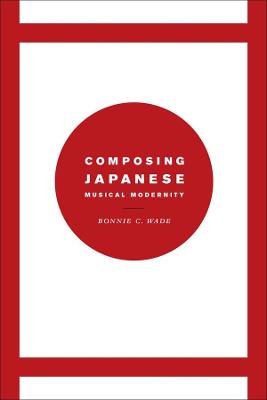Chicago Studies in Ethnomusicology
2 total works
When we think of composers like Mozart or Beethoven, we usually envision an isolated artist separate from the orchestra - someone alone in a study, surrounded by staff paper - and in Europe and America this image generally has been accurate. For most of Japan's musical history, however, no such role existed - composition and performance were deeply intertwined. Only when Japan began to embrace Western culture in the late nineteenth century did the role of the composer emerge. In Composing Japanese Musical Modernity, Bonnie C. Wade uses an investigation of this new musical role to offer new insights not just into Japanese music but Japanese modernity at large. Wade examines the history of composers in Japanese society, looking at the creative and economic opportunities that have sprung up around them - or that they forged - during Japan's astonishingly fast modernization. She shows that modernist Japanese composers have not bought into the high modernist concept of the autonomous artist, instead remaining connected to the people.
Articulating Japanese modernism in this way, Wade tells a larger story of international musical life, of the spaces in which tradition and modernity are able to meet and, ultimately, where modernity itself has been made.
Articulating Japanese modernism in this way, Wade tells a larger story of international musical life, of the spaces in which tradition and modernity are able to meet and, ultimately, where modernity itself has been made.
Combining ethnomusicological and art historical methods with history and lore, this text examines how musicians of Hindustan encountered and Indianized music from the Persian cultural sphere. Exploring the visual sources available in illustrated manuscripts and paintings of the Mughal Empire (1526-1858), Bonnie Wade focuses first on Akbar, to show how political and cultural agendas intertwined in the portrayal of Mughal court life. Wade then follows the depictions of music-making through paintings for Akbar's successors Jahangir and Shah Jahan to trace the gradual synthesis of Persian and Indian culture. She also provides an explicit and implicit focus on the role of women in Mughal culture and music. Richly illustrated with reproductions of Mughal paintings, this work should appeal to anyone interested in Indian history, art history, and ethnomusicology.

